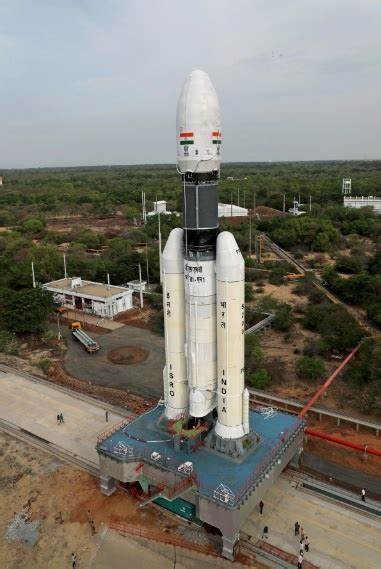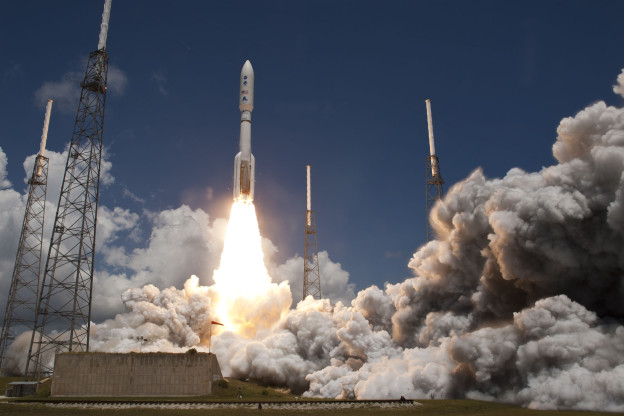India can become the fourth country to land a spacecraft on the Moon.
In the vast expanse of space exploration, India is all set to write its name in the annals of history as it attempts to become the fourth country to achieve the remarkable feat of landing a spacecraft on the Moon. This bold endeavor is a testimony to India’s unwavering commitment to scientific progress, technological innovation and the pursuit of knowledge beyond our earthly boundaries. As the Indian Space Research Organization (ISRO) embarks on this extraordinary journey, the world is watching with bated breath, eager to see the outcome that could propel India into the league of lunar pioneers.
A Historical Perspective:
India’s journey towards lunar exploration dates back to 2008 when it launched its first lunar mission, Chandrayaan-1. This pioneering effort marked India’s entry onto the global stage of space exploration and attracted significant attention for the successful deployment of instruments that detected water molecules on the lunar surface. This achievement was not only a source of national pride but also a testimony to India’s growing technological capabilities.
Chandrayaan-2: A Leap Forward:
Building on the successes of Chandrayaan-1, India’s ISRO launched the Chandrayaan-2 mission, which aimed to delve deeper into the lunar mysteries. Chandrayaan-2, launched in July 2019, comprises three major components: Orbiter, Vikram Lander and Pragyan Rover. The objective of the mission was to explore the Moon’s south pole region, which is known for its unique geological features and the presence of water ice.

Vikram Lander’s Landing: Challenges and Lessons:
The defining moment of Chandrayaan-2 came during the landing of the Vikram lander on the lunar surface. This complex process involved a series of automated maneuvers, which culminated in a soft landing near the Moon’s south pole. Unfortunately, the attempt suffered a setback as communication with the Vikram lander was lost at the last moment. Despite this, the mission was not without success; The orbiter continued to operate successfully and collect valuable data and imagery from lunar orbit.
Chandrayaan-3 and beyond:
India’s commitment to lunar exploration remains unwavering, as evidenced by the ongoing efforts of lunar missions. The planned Chandrayaan-3 mission aims to fulfill the goal that the Vikram lander had set for a soft landing on the lunar surface. This determination to learn from past experiences and meet challenges underlines India’s dedication to push the frontiers of space exploration.
Possible fourth moon landing:
As India’s Chandrayan mission progresses towards the goal of landing on the moon, the country stands on the verge of achieving a significant milestone. Currently, the elite club of countries that have landed on the Moon includes the United States, Russia (formerly the Soviet Union), and China. If successful, India will join this prestigious group and further cement its position as a rising star in space exploration.
Global Impact and Collaborative Efforts:
Beyond national pride, India’s lunar missions have had an enormous impact on humanity’s understanding of the Moon and the universe. The data collected from these missions contributes to the global knowledge base, which aids the progress of lunar science and planetary exploration. In addition, India’s efforts have the potential to pave the way for future cooperation among spacefaring nations, fostering an environment of shared research and mutual discovery.
Inspiration for future generations:
India’s achievements in space have long served as a source of inspiration, capturing the imagination of its citizens and fueling the aspirations of young scientists, engineers and students. The country’s success stories stand as testimony to the possibilities of human endeavor, encouraging the pursuit of careers in science, technology, engineering and mathematics (STEM).
Conclusion:
As India’s Chandrayan mission moves towards the moon landing, the world is witnessing a nation’s relentless pursuit of scientific progress. With Chandrayaan-3 on the horizon and the goal of a moon landing, India’s journey serves as a testament to human curiosity, resilience and the limitless potential for exploration beyond our terrestrial home. If successful, India’s ascension to the ranks of lunar landers would not only be a testament to its technological prowess, but also a celebration of humanity’s shared quest for knowledge and discovery in the universe.

